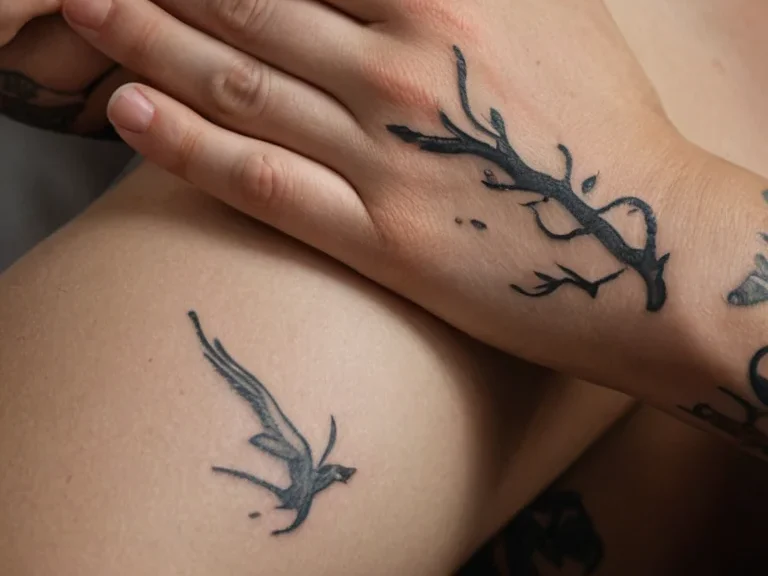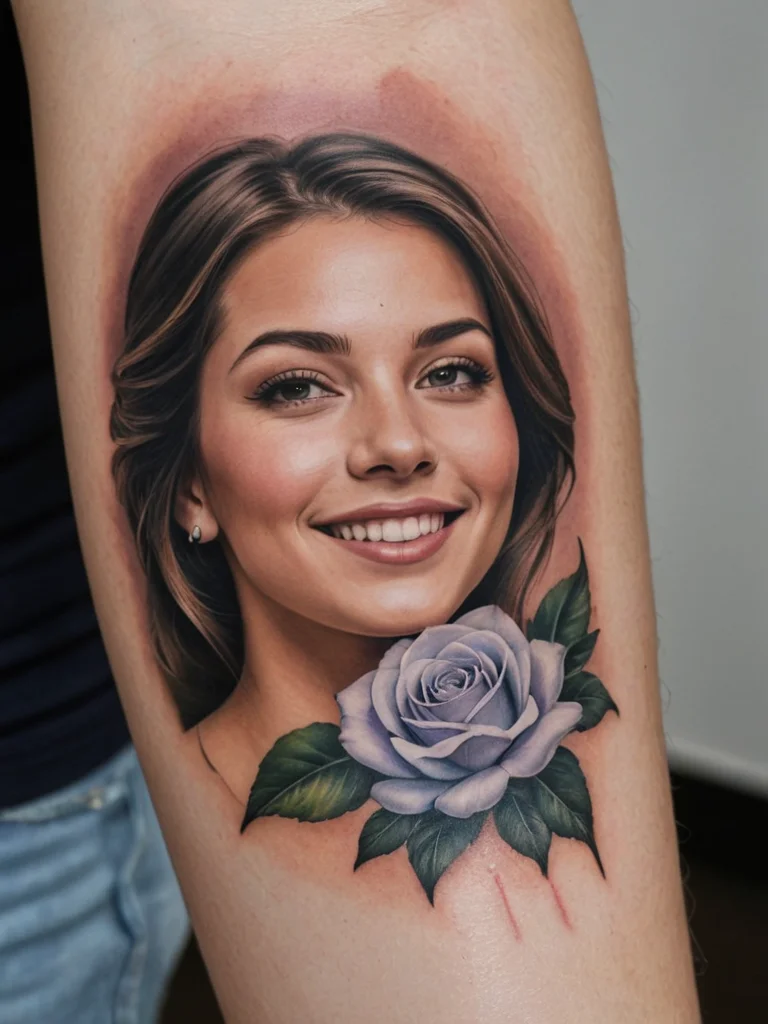The vibrant world of tattooing, often perceived as a purely creative and exhilarating pursuit, can also be a demanding profession that takes a significant toll on an artist’s physical and mental well-being. While the passion for inking skin and bringing clients’ visions to life is a powerful driving force, the relentless nature of the work can lead to a pervasive sense of exhaustion, disillusionment, and loss of motivation – commonly known as burnout. This silent struggle is a reality for many professional tattoo artists, impacting not only their careers but also their personal lives. Recognizing the early signs and understanding its multifaceted causes is the crucial first step towards fostering a sustainable and fulfilling career in this unique art form. At tattoovalue.net, we believe that a healthy artist is a happy and productive artist, and addressing burnout head-on is paramount for anyone dedicated to this craft.
The silent struggle – recognizing burnout in tattoo artists
Burnout in the tattoo industry isn’t just about feeling tired after a long day of work; it’s a deeper, more chronic state of emotional, physical, and mental exhaustion caused by prolonged stress. Tattoo artists often find themselves grappling with a unique set of challenges that can exacerbate this condition. One of the primary indicators is a pervasive lack of enthusiasm for the very work that once ignited your passion. You might find yourself dreading going into the studio, feeling indifferent towards new design ideas, or experiencing a significant decrease in creative output. This can manifest as irritability, increased cynicism, and a feeling of detachment from your clients and your art. Physically, burnout can present as persistent fatigue that sleep doesn’t alleviate, increased susceptibility to illness, headaches, digestive issues, and even chronic pain, particularly in the hands, wrists, and back – areas subjected to repetitive strain. Mentally and emotionally, you might notice increased anxiety, difficulty concentrating, memory problems, feelings of hopelessness, and a diminished sense of accomplishment. It’s crucial to distinguish these symptoms from occasional stress. Burnout is a sustained condition where these feelings and physical manifestations become the norm rather than the exception. Acknowledging these signs in yourself or your colleagues is not a sign of weakness, but rather an essential act of self-awareness and a commitment to long-term professional health. Tattoo artists who push through these symptoms without addressing them often find their passion slowly extinguished, leading to a decline in the quality of their work and their overall enjoyment of life.
Understanding the root causes of tattoo artist burnout: beyond the needle
The pressures contributing to burnout in tattoo artists are as diverse as the designs they create. Understanding these root causes is vital for developing effective preventative measures. One of the most significant factors is the sheer physical demand of the job. Tattooing requires hours of precise, repetitive movements, often in awkward positions, which can lead to chronic pain and physical fatigue. This constant physical exertion, coupled with the mental focus required for intricate work, creates a demanding dichotomy. Beyond the physical, the emotional labor involved is immense. Tattoo artists act as confidants, therapists, and creative collaborators for their clients, often dealing with sensitive personal stories, emotional vulnerability, and the pressure to perfectly translate abstract ideas into permanent body art. This constant emotional engagement, without adequate boundaries or personal outlets, can be incredibly draining. Financial instability is another prevalent stressor. While some artists achieve significant success, many face fluctuating income, the need to constantly hustle for clients, manage business expenses, and navigate the complexities of self-employment. This uncertainty can create persistent anxiety and pressure to accept every client, regardless of personal capacity. The inherently social nature of the job, while often rewarding, can also contribute. Artists are constantly interacting with people, sometimes dealing with difficult or demanding clients, and the pressure to maintain a positive and professional demeanor at all times, even when feeling unwell or overwhelmed, can be exhausting. Furthermore, the competitive nature of the tattoo industry, coupled with the pressure to constantly innovate and stay relevant, can lead to a relentless pursuit of perfection and a fear of falling behind. Social media also plays a dual role; while it offers exposure and inspiration, it can also create unrealistic expectations and a constant comparison trap, adding another layer of psychological pressure. Finally, the lack of proper work-life balance is a major culprit. Many artists, driven by passion or financial necessity, tend to overwork, sacrificing personal time, hobbies, and relationships, which are crucial for mental and emotional replenishment.

Actionable strategies: reclaiming your passion and preventing exhaustion
Combating burnout requires a proactive and multi-faceted approach, focusing on practical strategies that protect your energy, creativity, and overall well-being. Firstly, setting clear boundaries is paramount. This involves learning to say ‘no’ to requests or clients that you feel are not a good fit, are too demanding, or simply exceed your current capacity. It’s also essential to establish firm working hours and stick to them as much as possible, resisting the urge to work through every break or stay late every day. This also extends to your consultation process; clearly communicate your availability, pricing, and design process from the outset to manage client expectations effectively. Secondly, prioritize physical health. This isn’t a luxury; it’s a necessity for sustained performance. Incorporate regular physical activity into your routine – stretching, yoga, or a gym workout can help alleviate physical strain and boost energy levels. Ensure you are maintaining good posture while working and taking frequent short breaks to move and stretch. Hydration and nutrition are equally important; keep water readily available and fuel your body with balanced meals to maintain stamina and focus. Thirdly, foster a strong support system. Connect with fellow artists, both within your studio and online. Sharing experiences, challenges, and coping mechanisms with people who truly understand the demands of the profession can be incredibly validating and helpful. Consider joining professional organizations or attending industry events not just for networking, but for mutual support. Fourthly, cultivate mindfulness and stress management techniques. Simple practices like deep breathing exercises, meditation, or journaling can significantly reduce stress levels and improve mental clarity. Even a few minutes dedicated to mindful practice each day can make a difference. Remember, your body and mind are your most valuable tools; treat them with the respect and care they deserve. Regularly stepping away from the intense focus of the needle can prevent the build-up of pressure and allow for mental rejuvenation.

Building sustainable habits: long-term resilience for your tattoo career
Creating a career that lasts requires building sustainable habits that foster long-term resilience, moving beyond crisis management to proactive self-care. One of the cornerstones of this is establishing a consistent work-life balance. This means actively scheduling downtime and ensuring it’s protected. Treat your personal time with the same importance as a client appointment. Engage in hobbies and activities that are completely unrelated to tattooing – things that bring you joy, relaxation, and a sense of fulfillment outside of your professional identity. This could be anything from hiking, painting, playing a musical instrument, or spending quality time with loved ones. It’s also crucial to develop a financial strategy that provides stability and reduces stress. This might involve diversifying your income streams, building an emergency fund, or investing in financial planning. Knowing that you have a financial cushion can alleviate the pressure to constantly accept every job, allowing you to be more selective and maintain creative integrity. Regularly reassessing your workload and client booking schedule is another vital habit. Are you overbooking yourself? Are your sessions too long without adequate breaks? Implementing a system that prevents over-scheduling and ensures sufficient recovery time between clients is key. This might mean booking fewer clients per week, shortening appointment durations, or incorporating longer breaks throughout the day. Furthermore, continuous learning and professional development should also include learning about self-care and mental health management. Attend workshops or read resources that focus on these aspects of the profession. Investing in your well-being is investing in your career’s longevity. Lastly, remember to celebrate your successes, big and small. Acknowledging your achievements, the beautiful art you create, and the positive impact you have on your clients can be a powerful antidote to burnout. Regularly reflecting on why you started tattooing and rediscovering that initial spark can reignite your passion and provide motivation to continue building a healthy and thriving career.

Conclusion: thriving as a tattoo artist – healthier practices for a lifelong career
The journey of a tattoo artist is a marathon, not a sprint, and burnout is a common hazard that can derail even the most passionate individuals. However, by understanding its origins and implementing proactive, sustainable strategies, you can navigate the demanding landscape of this art form while safeguarding your passion, health, and creativity. Prioritizing physical well-being through exercise, proper nutrition, and ergonomic practices is non-negotiable. Equally important is nurturing your mental and emotional health by setting boundaries, seeking support, practicing mindfulness, and engaging in activities that bring you joy outside of your work. Building a resilient career means fostering a healthy work-life balance, managing your finances wisely, and continuously reassessing your workload to prevent overexertion. Remember, your art is a gift, and to continue giving that gift effectively, you must first replenish your own well. Embrace these practices not as chores, but as essential investments in your long-term success and happiness as a professional tattoo artist. By committing to these healthier ways of working and living, you can ensure that your passion for tattooing remains vibrant and that you can continue to create meaningful, lasting art for years to come, truly thriving in this incredible profession.
